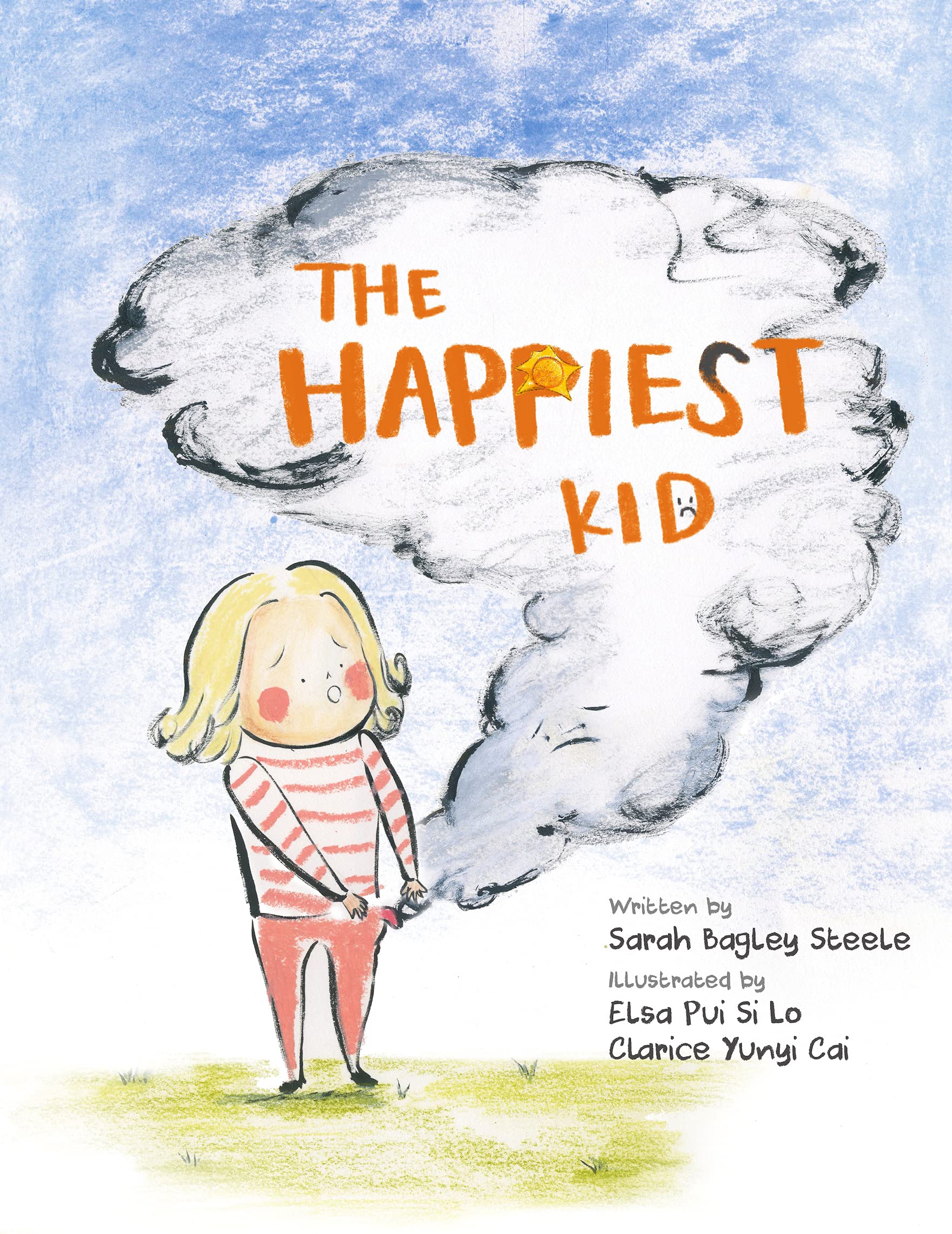
As her family knows well, Sally is the happiest child. She wakes up every morning to see the beautiful sun shining down on her, full of optimism for the day ahead. Then a few things don’t go very well for Sally. She knocks over a toy brick tower at school and is worried that she’s disappointed her classmates. A letter from a friend that has moved away usually fills her with joy, but that day it just makes her feel the distance between them more strongly.
She wakes up on the following morning and notices that the bright sun that reliably greets her has been replaced with a gloomy grey cloud. She’s not sure why it’s there, but is certain she doesn’t like it and feels rather ashamed of it, and goes to great lengths to try to hide the cloud from her parents, teacher and classmates. Inevitably, the more she tries to hide the cloud, the more it seems to grow, until it become so big and heavy that she feels totally overwhelmed by a feeling of sadness. The turning point comes when a boy at school notices her cloud and tells her that he has one too from time to time. Sally finds the courage to be curious and playful with her cloud, and allows herself to loosen her grip on it. She stops trying to hide it from her friends and family, and as she does, the feeling of sadness starts to fade.
The cloud metaphor that author Sarah Bagley Steele has chosen to convey Sally’s sadness works perfectly, providing a beautifully simple and non-threatening way to start a conversation with a young child about big feelings and how to process and share them. The narrative has been carefully created to be both engaging and accessible for young children. A team of two artists (Elsa Pui Si Lo and Clarice Yunyi Cai) has created very appealing charcoal and ink illustrations, which skilfully bring Sally to life and reflect her changing emotions well.
 A gentle, reassuring picture book that helps children to recognise and normalise sadness and talk about big feelings
A gentle, reassuring picture book that helps children to recognise and normalise sadness and talk about big feelings

